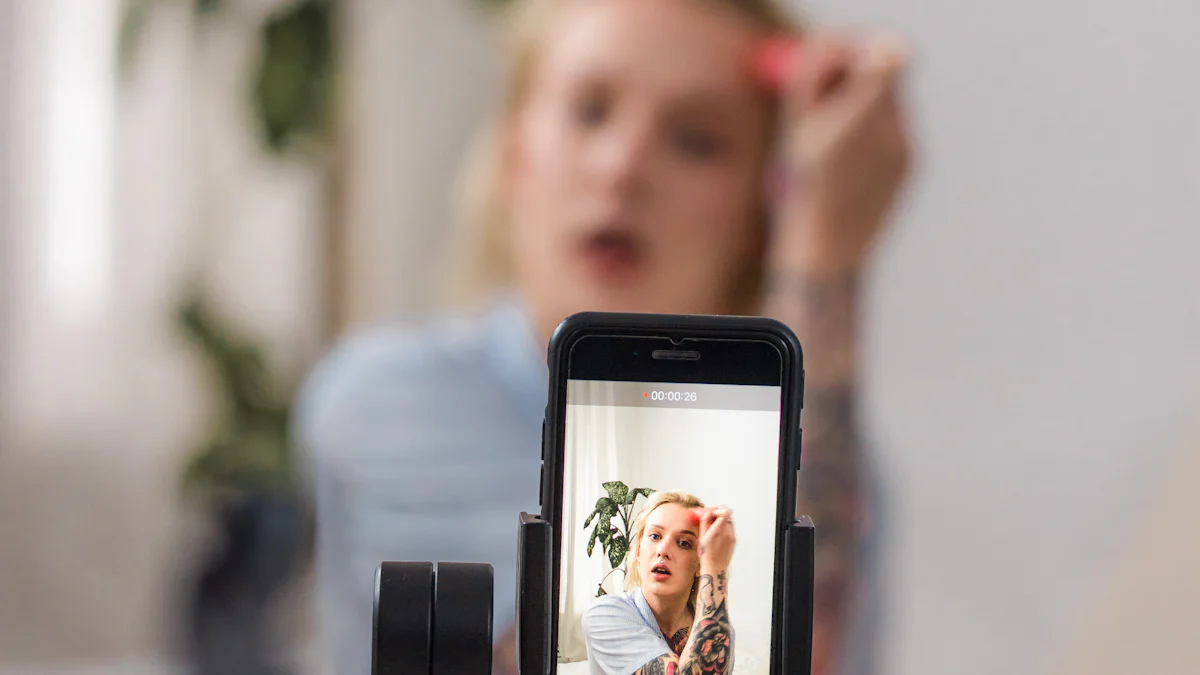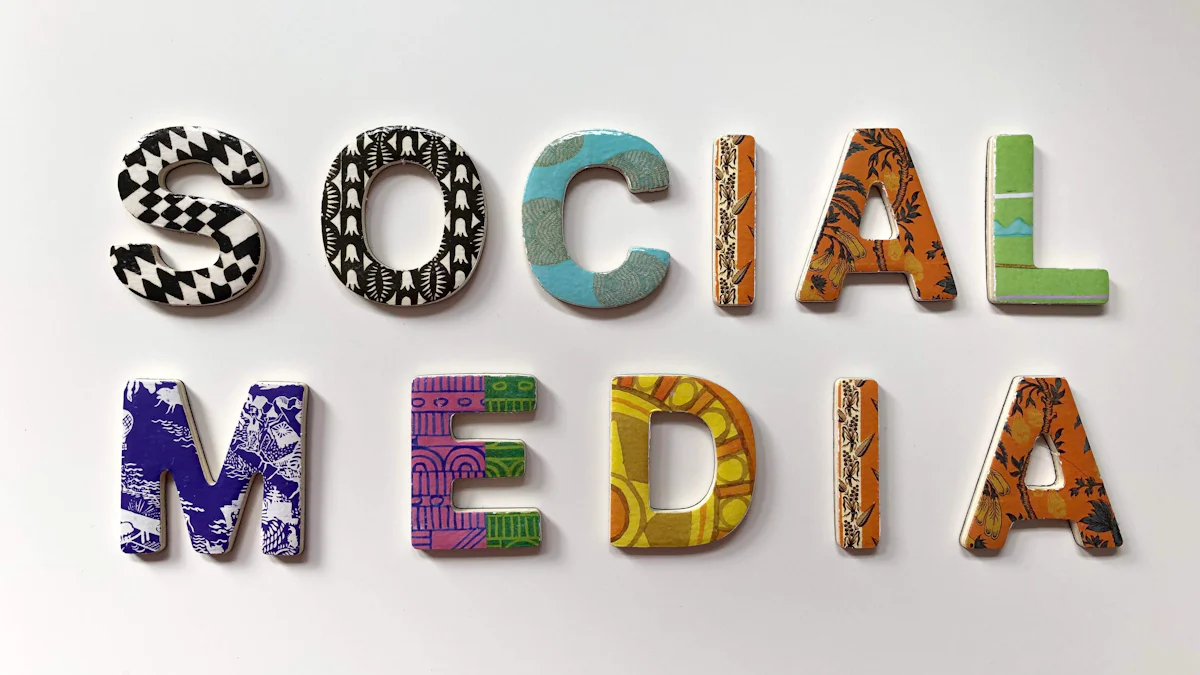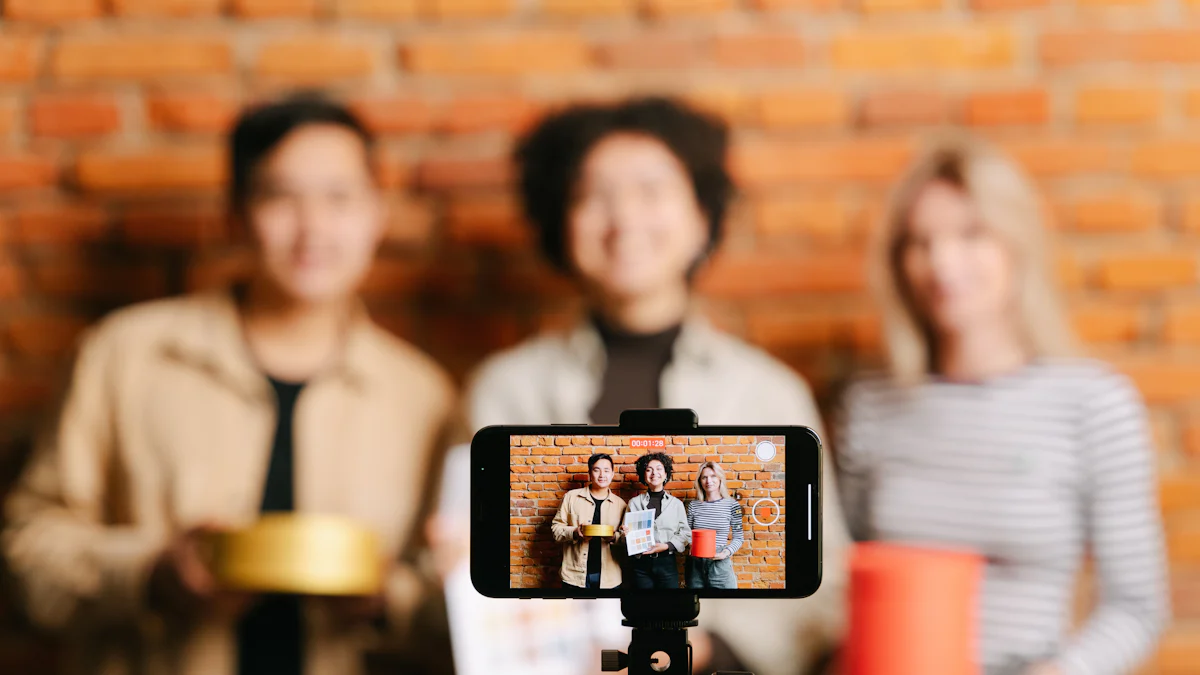Influencer Marketing Job Trends Shaping 2025

Influencer marketing has become a driving force in the digital world, and its impact in 2025 will be nothing short of transformative. You’re witnessing a shift where brands are projected to spend $9.29 billion on influencer campaigns, a 14.2% increase from 2024. This growth reflects how businesses now earn an average of $6.50 for every $1 spent on influencer marketing.
The job landscape has evolved dramatically, particularly for those seeking an influencer marketing job. You no longer see brands relying solely on celebrity endorsements. Instead, they prioritize authenticity and data-driven strategies. Micro and nano-influencers are reshaping how brands connect with audiences, creating meaningful engagement across platforms like TikTok and YouTube. As a professional, understanding these influencer marketing trends is essential to staying ahead in this dynamic industry.
Key Influencer Marketing Trends in 2025

Rise of AI and Virtual Influencers
AI's role in automating influencer marketing campaigns
Artificial intelligence is revolutionizing influencer marketing by automating complex tasks. You can now use AI tools to identify the perfect influencers for your campaigns, analyze audience demographics, and even predict engagement rates. These tools save time and ensure precision, allowing you to focus on strategy rather than manual processes. AI also enables real-time performance tracking, helping you optimize influencer campaigns for maximum impact.
AI-powered influencers are also reshaping the landscape. Virtual personalities like Lil Miquela and Noonoouri are gaining popularity in the metaverse and gaming environments. These digital influencers offer brands unmatched creative control and consistency. They can interact with audiences 24/7, creating a seamless connection between the brand and its followers.
The growing influence of virtual influencers on brand strategies
Virtual influencers are more than just a trend; they’re a game-changer. Brands are leveraging these CGI-created personas to deliver personalized content that resonates with their target audience. For example, virtual influencers have successfully driven engagement in campaigns by maintaining a consistent tone and aesthetic. This approach ensures that your brand message remains clear and compelling.
Growth of Micro and Nano Influencers
The increasing value of niche audiences in influencer marketing
Micro-influencers and nano-influencers are proving that smaller audiences can deliver bigger results. Their average engagement rate of 4.39% surpasses that of larger influencers, making them a valuable asset for brands. These creators often have highly engaged, niche audiences who trust their recommendations. By collaborating with them, you can tap into communities that align closely with your brand values.
Magda Houalla, Aspire’s director of marketing strategy, highlighted that 93% of creators are willing to work for free products. This growing willingness to collaborate makes micro-influencers an affordable and effective option for brands.
How this trend is reshaping influencer marketing job roles
The rise of micro-influencers is creating new opportunities in influencer marketing. You’ll see a growing demand for professionals who can identify and manage these niche creators. Roles like influencer relationship managers and campaign strategists are becoming essential as brands shift their focus to smaller, more targeted collaborations.
Emphasis on Authenticity and Transparency
The demand for genuine collaborations between influencers and brands
Consumers are prioritizing trust and authenticity in their purchasing decisions. They want to see real connections between influencers and brands. This means you need to focus on building genuine partnerships that reflect shared values. For example, Gymshark’s collaborations with influencers who embody their fitness ethos have enhanced their credibility and engagement.
How authenticity is driving consumer trust and engagement
Authenticity and transparency in paid partnerships are no longer optional. Seventy-three percent of consumers are willing to change their buying habits based on ethical practices. By showcasing your commitment to transparency in paid partnerships, you can build trust and foster long-term loyalty.
Consumers now expect brands to engage in authentic dialogue rather than transactional relationships. This shift is driving higher engagement and deeper connections with audiences.
Long-term Partnerships Over Short-term Contracts
The shift towards sustained influencer-brand relationships
You’ve likely noticed a growing trend: brands are moving away from one-off collaborations and embracing longer-term partnerships. This shift allows influencers to build deeper connections with their audiences while consistently promoting a brand’s message. These sustained relationships create a sense of authenticity that short-term contracts often lack. For example, when an influencer repeatedly endorses a product, their audience perceives it as a genuine recommendation rather than a fleeting advertisement.
Benefits of long-term partnerships for influencers and brands
Long-term partnerships offer significant advantages for both parties. Here’s a breakdown:
| Benefit | Description |
|---|---|
| Authenticity and credibility | Influencers appear more genuine, enhancing the effectiveness of endorsements. |
| Consistent brand messaging | Extended collaborations ensure cohesive and recognizable branding. |
| Audience trust and loyalty | Repeated exposure fosters stronger connections with the influencer’s followers. |
| Cost-efficiency | Brands can negotiate better rates for sustained partnerships. |
| Content quality | Influencers invest more effort into creating high-quality content. |
| Risk mitigation | Long-term loyalty reduces the risk of influencers endorsing competitors. |
Additionally, these partnerships boost conversions through repeated exposure and fuel word-of-mouth marketing. They also make it easier to predict performance based on past data.
Diversification of Revenue Streams for Influencers
The rise of influencer-owned products and services
Influencers are no longer relying solely on brand deals. Many are launching their own products and services, creating new revenue streams. For instance, a fitness influencer might sell workout guides, while a travel blogger could design custom travel journals. These ventures allow influencers to monetize their expertise and connect with their audiences on a deeper level.
How influencers are leveraging multiple income streams
You’ve seen influencers diversify in creative ways. A food blogger might teach others how to grow a recipe channel, while a travel photographer could sell prints or license their photos. Some influencers even rent out studio spaces for other creators. By leveraging multiple income streams, influencers reduce their dependence on brand deals and build more sustainable careers.
Inclusivity and Diversity in Influencer Collaborations
The growing focus on representation in influencer marketing campaigns
Representation matters more than ever in influencer marketing. Brands are prioritizing inclusivity, ensuring their campaigns reflect diverse voices and perspectives. For example, Maybelline’s Pride and Black History Month campaigns amplified underrepresented influencers, creating meaningful connections with their audiences.
How inclusivity is shaping hiring and collaboration practices
Inclusive campaigns are reshaping how brands hire and collaborate with influencers. Companies now seek creators who resonate with diverse demographics, ensuring their marketing efforts feel authentic. Currys, for instance, worked with disabled influencers to raise accessibility awareness, strengthening their reputation within the community. By embracing inclusivity, you can foster deeper engagement and build trust with a broader audience.
Integration of Live Shopping and Social Commerce
The rise of live shopping events on platforms like Instagram and TikTok
Live shopping is transforming how you connect with audiences. Platforms like Instagram and TikTok are leading this revolution, offering real-time shopping experiences that combine entertainment and convenience. Instagram’s live shopping feature creates urgency, encouraging immediate purchases. TikTok Shopping integrates in-feed ads and product links, making it easy for viewers to shop while watching engaging videos.
Other platforms are also stepping up. Facebook hosts live shopping events where you can showcase products and interact with potential buyers. Pinterest’s “Shop the Look” pins and catalogs allow users to discover and purchase items seamlessly.
| Platform | Key Features |
|---|---|
| Instagram Shopping | Shoppable Posts, Instagram Shops |
| Facebook Shops | Customizable Storefronts, Live Shopping |
| Pinterest Shopping | Shop the Look Pins, Pinterest Catalogs |
| TikTok Shopping | In-Feed Ads and Product Links, Hashtag Challenges |
These platforms make it easier than ever to turn viewers into customers. By leveraging live shopping, you can create an immersive experience that drives sales and builds stronger connections with your audience.
Skills professionals need to thrive in social commerce
To excel in this fast-paced environment, you need specific skills. Data-driven decision-making is crucial. You must analyze metrics to understand what works and optimize campaigns for revenue growth. Experience in building cross-channel campaigns is another must-have. This ensures your efforts align across platforms for maximum impact.
You also need to master campaign discussions. Dive deep into creative strategies, execution plans, and performance evaluations. Highlighting these skills will set you apart in the competitive world of influencer marketing.
The Return of In-person Events
How in-person events are creating new opportunities for influencers
In-person events are making a comeback, offering influencers exciting ways to engage with audiences. Universal recently invited top creators like Natalie Marshall to the Wicked premiere, while Netflix hosted influencers for the launch of Griselda. These events provide unique opportunities to create content, build relationships, and amplify brand visibility.
Cineworld’s 4DX Creator Day is a prime example. It generated over 52 million views and 200,000 shares, proving the power of experiential marketing. FEELD’s collaboration with Upfluence also highlights how in-person events can drive app downloads and boost engagement.
The role of experiential marketing in influencer campaigns
Experiential marketing is redefining how you approach influencer campaigns. By participating in immersive events, influencers create authentic content that resonates deeply with their followers. For example, the Dollar Shave Club’s pop-up barbershop campaign used influencers to share their experiences, extending the brand’s reach organically.
Interactive campaigns like these generate social proof, which is essential for building trust. Influencers’ flexibility allows them to engage in various activities, making their content more dynamic and relatable. Whether it’s a pop-up event or a product launch, experiential marketing helps you connect with audiences on a personal level, driving long-term loyalty.
Implications for Influencer Marketing Jobs

Evolving Job Roles
The emergence of advisory and consultancy roles for creators
The rise of sustainability and social responsibility in influencer marketing has created a demand for advisory roles. You’ll see brands seeking professionals who can guide content creators on aligning their messaging with ethical practices. These consultants help influencers craft campaigns that resonate with their audience while maintaining authenticity. By offering influencer recommendations rooted in brand storytelling, you can help creators build trust and long-term partnerships with brands.
As a consultant, you’ll also play a key role in helping creators navigate social media best practices. This includes advising on platform algorithms, content optimization, and audience engagement strategies. These roles are essential as brands prioritize meaningful connections over superficial influencer content.
New opportunities in AI-driven influencer marketing
Artificial intelligence is reshaping the influencer marketing job landscape. AI tools now help brands identify the right creators, predict campaign performance, and optimize influencer recommendations. As a professional, you’ll need to adapt to this shift by mastering AI-driven tools and analytics. These skills will allow you to provide actionable insights, ensuring campaigns deliver measurable results.
AI also opens doors to new roles, such as AI campaign strategists. These professionals use data to refine influencer content and storytelling, ensuring it aligns with brand goals. By embracing AI, you can position yourself as an indispensable asset in the evolving marketing industry.
Required Skills for 2025
The importance of adaptability and continuous learning
The influencer marketing industry evolves rapidly. To stay ahead, you must embrace adaptability and commit to continuous learning. This means staying updated on trends like sustainability and social responsibility, which are now central to influencer campaigns. By understanding these shifts, you can guide creators in crafting authentic content that builds trust with their audience.
Key skills such as AI literacy, content strategy, and relationship management
In 2025, AI literacy will be a must-have skill. You’ll need to analyze data, optimize campaigns, and provide influencer recommendations based on clear metrics like click-through rates and conversions. Content strategy is equally important. You must help creators develop storytelling techniques that align with brand values and engage their audience.
Relationship management is another critical skill. Building strong connections with influencers and brands ensures long-term success. By mastering these skills, you can thrive in the competitive influencer marketing job market.
Career Opportunities in Influencer Marketing
The growing importance of LinkedIn as a B2C growth channel
LinkedIn is emerging as a powerful platform for influencer marketing. Brands now use it to connect with professionals and promote B2C campaigns. As a marketer, you can leverage LinkedIn to identify creators who align with your brand’s values. This platform also allows you to showcase influencer recommendations and highlight successful campaigns, boosting your credibility.
Opportunities for freelancers, consultants, and agency professionals
The demand for influencer marketing expertise has created opportunities for freelancers and consultants. You can offer specialized services, such as campaign strategy or influencer relationship management. Agencies are also expanding their teams to include experts in sustainability and social responsibility. These roles allow you to shape the future of influencer marketing while enjoying flexibility and creative freedom.
By embracing these opportunities, you can position yourself as a leader in the influencer marketing job market.
The influencer marketing landscape in 2025 is brimming with opportunities. Trends like the rise of micro-influencers, the integration of AI, and the emphasis on authenticity are reshaping how you connect with audiences. Influencers now impact every stage of the customer journey, proving that trust and genuine connections are the ultimate currency.
| Trend | Description |
|---|---|
| Full Funnel, Full Impact | Influencers now guide customers from awareness to purchase, boosting sales. |
| Trust: The Ultimate Currency | Authenticity drives loyalty; audiences reject overly polished content. |
| Rise of Micro-Influencers | Niche creators thrive due to their expertise and community engagement. |
To stay competitive, you must adapt quickly. Upskilling is essential. Use tools like Kolsquare to analyze campaigns or social listening platforms to monitor brand sentiment. Networking is equally important. Attend industry events, optimize your profiles, and collaborate with others to expand your reach.
Start by defining clear goals, understanding your audience, and choosing influencers who align with your brand. Build long-term partnerships and track metrics to refine your strategies.
By embracing these steps, you’ll position yourself as a leader in this dynamic industry. Stay informed, stay adaptable, and seize the opportunities ahead!
FAQ
What skills do you need to succeed in influencer marketing in 2025?
You need AI literacy, content strategy expertise, and relationship management skills. These abilities help you analyze data, craft engaging campaigns, and build strong connections with influencers and brands. Staying adaptable and continuously learning will also keep you ahead in this fast-evolving industry.
How can you find the right influencers for your brand?
Use AI tools to analyze audience demographics and engagement rates. Platforms like Aspire or Kolsquare simplify the process by matching you with influencers who align with your brand values. Focus on creators with niche audiences for better engagement and authenticity.
Why are long-term partnerships better than short-term collaborations?
Long-term partnerships build trust and credibility. They allow influencers to promote your brand consistently, creating stronger connections with their audience. This approach also ensures cohesive messaging, better content quality, and cost-efficiency for your campaigns.
How can you stay updated on influencer marketing trends?
Follow industry blogs, attend webinars, and join networking events. Use tools like social listening platforms to monitor trends and audience sentiment. Staying informed helps you adapt quickly and refine your strategies for better results.
What platforms are essential for influencer marketing in 2025?
Instagram, TikTok, and LinkedIn are must-haves. Instagram and TikTok excel in live shopping and social commerce, while LinkedIn is growing as a B2C channel. Each platform offers unique features to help you connect with your target audience effectively.
See Also
Key Influencer Marketing Trends You Should Follow in 2024
Essential Influencer Marketing Platforms for Your 2024 Strategy
Effective TikTok Influencer Marketing Techniques for 2024
20 Crucial Influencer Marketing Statistics Every Marketer Needs
